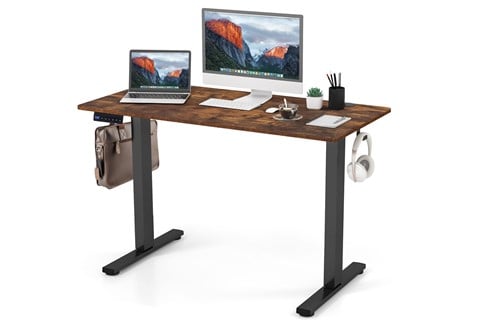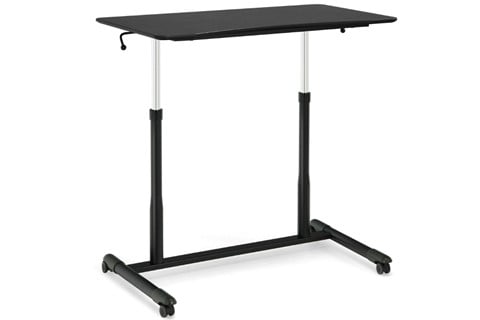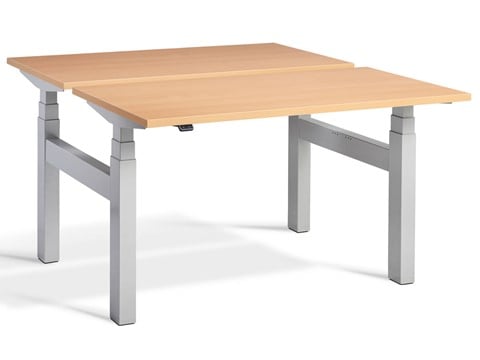How Do You Choose a Good Home Office Desk? Expert Tips for the Perfect Fit
Working from home has become increasingly popular, and having a comfortable, functional home office desk is essential to maintain productivity and efficiency. With so many options available on the market, it can be challenging to determine which desk is best suited for your needs. In this article, we'll provide you with some critical factors to consider when choosing the perfect office desk for your work-from-home setup.
Firstly, think about the space available in your home and the various components that you'll need to accommodate. Ensure the desk you choose is an appropriate size and provides enough surface area for your computer, peripherals, and other essential items. In addition to its dimensions, consider your personal preferences in style, colour, and materials.
Lastly, take ergonomics into account when making your decision. An office desk with adjustable height (such as standing desks) and excellent stability can help you maintain a healthy posture throughout the day, reducing the risk of strain or injury. It's also crucial to ensure that the desk can accommodate a comfortable, ergonomic office chair that supports your back and promotes good sitting habits. With these factors in mind, you're sure to find a home office desk that meets your needs and facilitates a positive working environment.
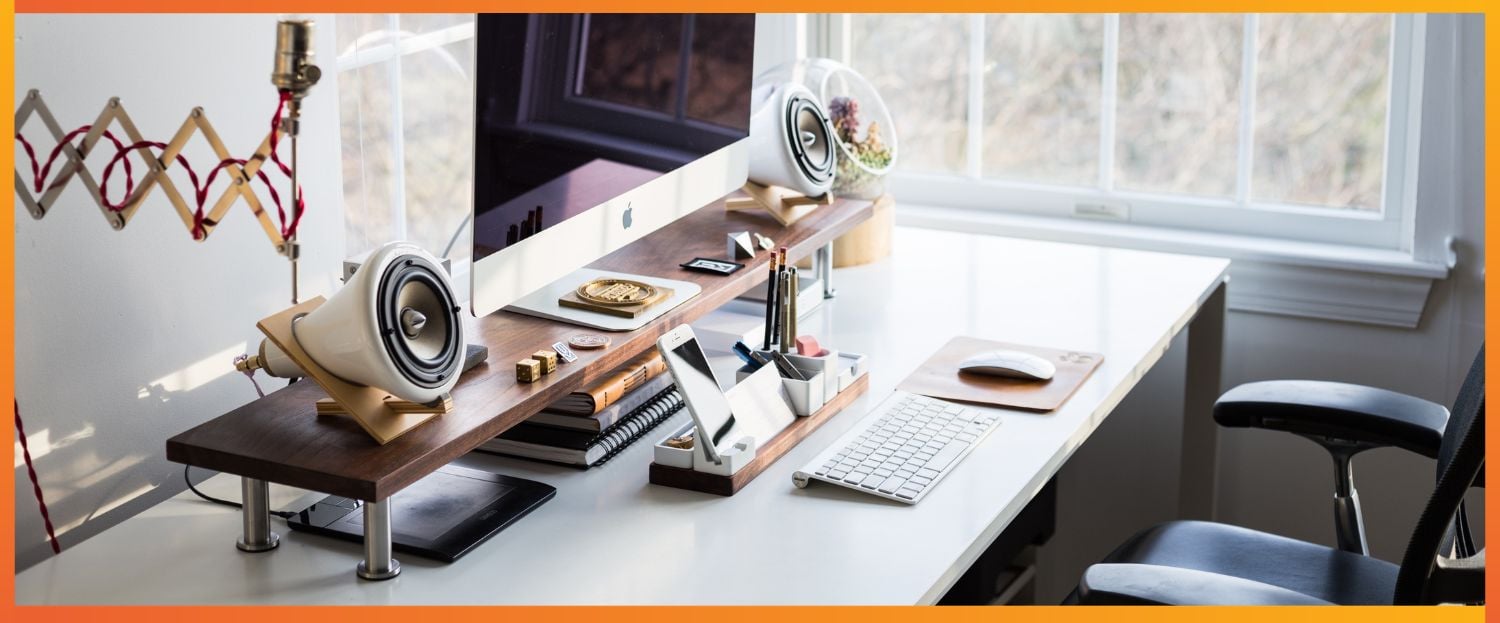
Understanding Your Space and Need
Assessing Space
Before making any decisions, take the time to assess the spatial constraints of your living area. Carefully measure your room's dimensions in order to identify the most optimal location for a home office desk. Be sure to consider any doors or windows and their impact on the placement of your new workspace. Rooms with multiple functions, such as a living room or bedroom, may require more creative solutions.
One potential solution is to opt for a space-saving design, which could involve a folding, wall-mounted, wave or corner desk. These types of workspaces are particularly useful in smaller rooms where every inch matters. Consider creating a table of your room's measurements, outlining various desk dimensions (80cm, 100cm, 120cm, 140cm, 160cm & 180cm), and comparing them against the available space in your home.
- Room:
- Living room
- Bedroom
- Home office
- Desk Dimensions:
- Length
- Width
- Height
When shopping for a new home office desk, keep the measurements you have gathered in mind, and be sure to select a desk size that comfortably accommodates both your space and your needs.
Identifying Your Needs
Next, determine the specific requirements of your home office environment. What tasks will you typically perform at your desk? How much storage and surface area will be required to accommodate your office equipment? Evaluate these factors and create a list:
- Storage requirements
- Surface area needs
- Ergonomics
- Functionality
For instance, you may need a desk with integrated storage solutions, such as drawers, shelves or overhead compartments. Alternatively, if you'll primarily use a laptop for work, a simpler desk design might suffice.
Nowadays, many people utilise multiple monitors when working to help productivity, and this is where monitor arms come in handy. If you’ve established you’ll likely require monitor arms, it’s important that your chosen office desk will accommodate them.
Tailoring your desk selection to match your unique needs will ensure a more efficient and enjoyable workspace. By thoroughly evaluating your space and requirements, you can choose a high-quality home office desk that best suits your lifestyle.
Selecting Material and Design
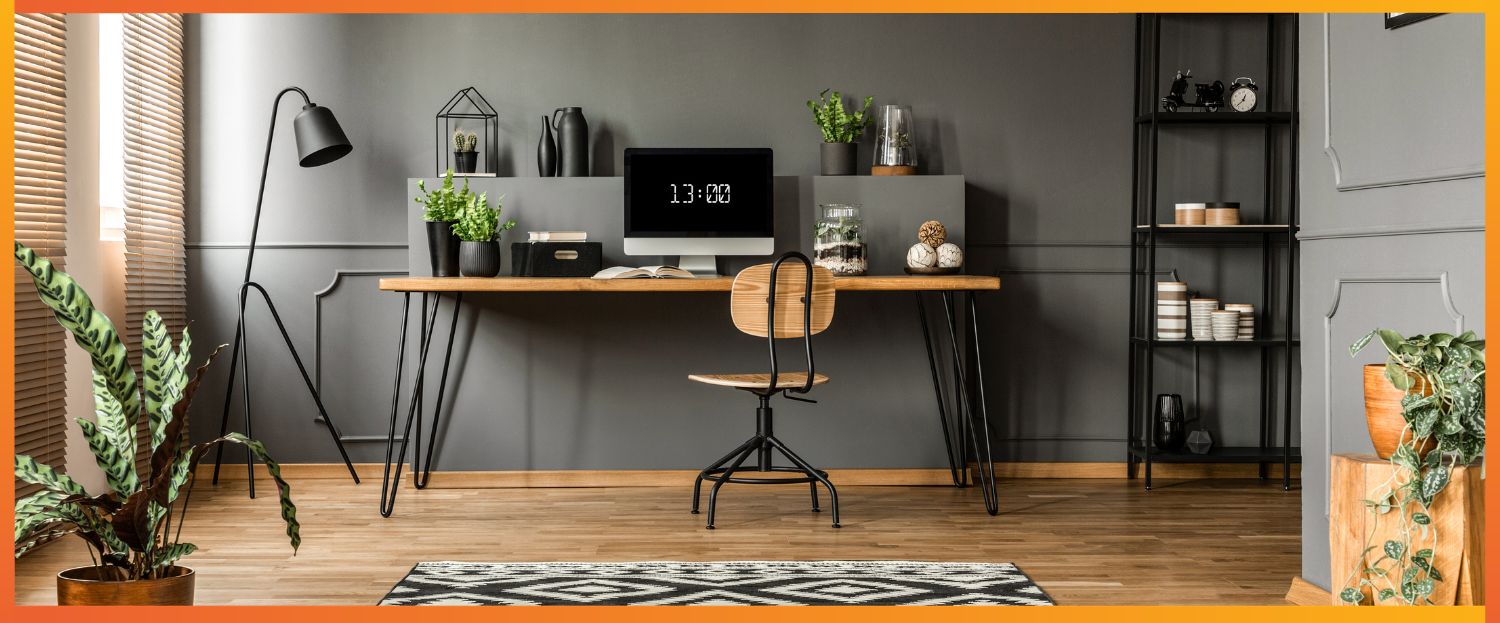
Material Choice
When choosing a home office desk, it's essential to consider the material as it can significantly impact the desk's durability, maintenance, and aesthetics. Common materials for desks include solid wood, veneer, metal, and glass.
- Solid wood: A classic choice, wooden desks are sturdy and long-lasting. They come in various types of wood, such as oak, maple, and walnut, offering a range of colours and grains. Wooden desks can suit both traditional and modern styles, but they may be susceptible to scratches and require regular maintenance.
- Veneer: Composed of a thin layer of wood or other material affixed to a cheaper core material, veneer desks are typically more affordable than solid wood while providing a similar appearance. Although not as durable as solid wood, they can still provide a stylish option for your home office.
- Metal: Durable and low-maintenance, metal desks can deliver a sleek, modern look or an industrial aesthetic depending on the design. These desks are often lightweight and may be combined with other materials such as glass or wood for added visual interest.
- Glass: For a contemporary look, consider a glass desk. They offer a minimalistic design, are easy to clean, and can make a smaller space appear more spacious. However, they may be less sturdy than other materials and require careful handling to avoid breakage.
Design Selection
The design of your home office desk should not only complement your interior style but also facilitate your work and comfort. Consider the following factors when selecting a desk design:
- Style: Determine whether you prefer a classic, modern, or contemporary look. A traditional wooden desk can work well in a classic setting, while a metal or glass desk may be more suitable for a modern or minimalist environment.
- Functionality: Consider the purpose of your desk and ensure it provides adequate storage, space for peripherals, and cable management. An L-shaped or corner desk can be a great solution for utilising office space efficiently, while a standing desk can offer great health benefits by encouraging movement during your workday.
- Ergonomics: Ensure the desk height and dimensions work well for your body and the equipment you use. An adjustable height desk can provide the flexibility to adapt to your preferences and minimise the risk of discomfort or strain while working.
By carefully considering the materials and design of your home office desk, you can create a comfortable, functional, and visually appealing workspace that suits your needs and style.
Addressing Comfort and Efficiency
Desk Height and Ergonomics
Choosing the right desk height is essential for both comfort and productivity. A desk that is too high or too low can lead to discomfort and strain on your neck, shoulders, and back. To maintain proper ergonomics, consider the following points:
- Your desk should be at a height where your elbows are at a 90-degree angle when typing on a keyboard.
- Your eyes should be level with the top third of your computer screen when looking straight ahead.
- Use an adjustable chair that allows for easy height adjustments to achieve the correct posture.
If you find that your desk is too low, consider using a laptop stand or a height-adjustable mechanism to raise your computer screen. On the other hand, if your desk is too high, a ergonomic footrest can help maintain proper posture by providing support for your feet.
Suitable Accessories
Investing in the right ergonomic desk accessories can significantly enhance the comfort and efficiency of your home office. Some essential accessories to consider are:
- Keyboard and mouse: Look for ergonomic designs that fit comfortably in your hands, such as those with wrist rests or a contoured shape.
- Laptop stand: Elevate your laptop screen to an optimal height to minimise neck and back strain.
- Footrest: Supports your feet when your desk is too high, allowing you to maintain proper posture.
- Monitor riser: Raises your computer screen to the correct height to reduce eye and neck strain.
Remember to take breaks and stretch throughout the day to prevent discomfort and fatigue. By prioritising comfort and efficiency, you can create a home office that supports your productivity and overall well-being.
Investing In Versatility
When setting up a home office, it's essential to invest in a desk that adapts to your changing needs and promotes a healthy, clutter-free workspace. Here are some key factors to consider when searching for a versatile home office desk.
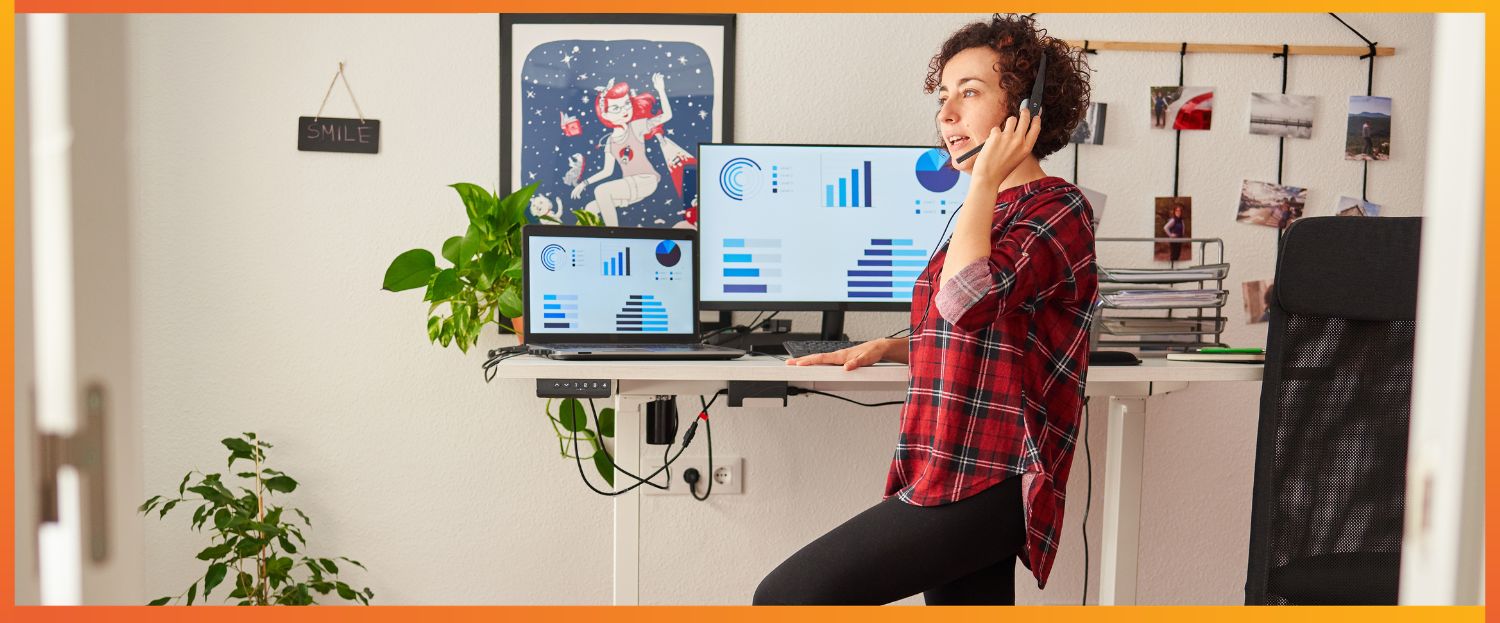
Standing Desks
A height-adjustable or standing desk plays a crucial role in promoting better health and productivity. It allows you to switch between sitting and standing throughout the day, reducing the strain on your body and potentially enabling you to burn more calories throughout the day. By opting for a standing desk, you can avoid the health issues linked to prolonged sitting and create a more dynamic work environment.
